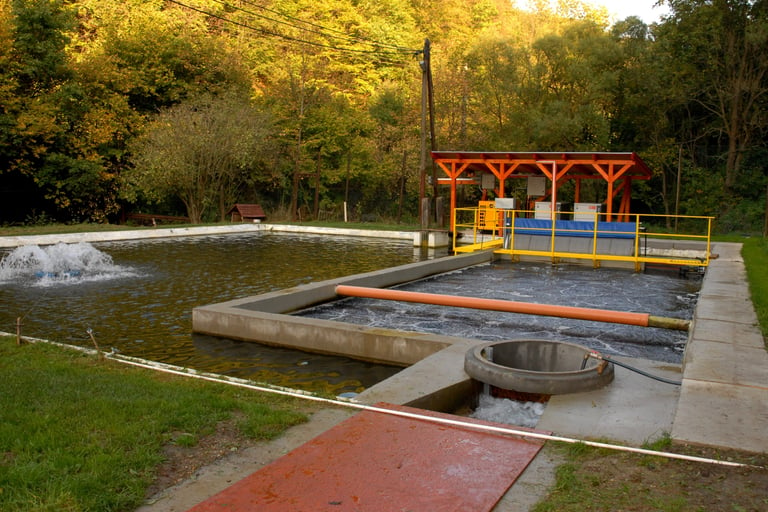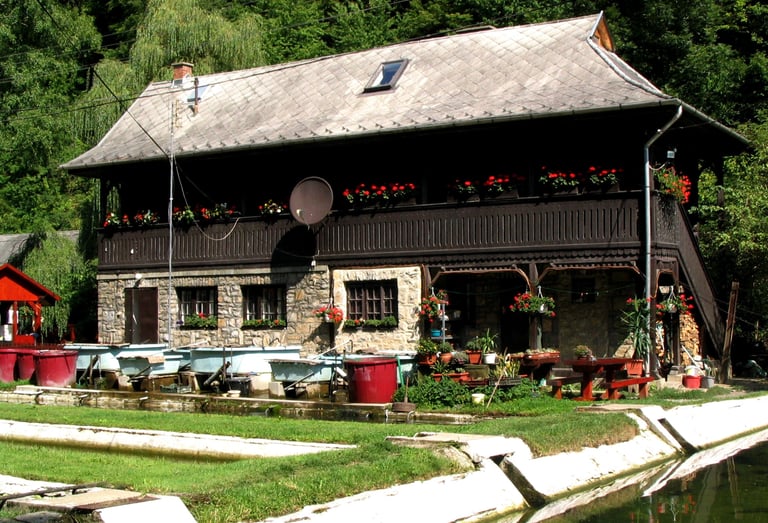History of the Lillafüredi Pisztrángtelep
Our story
There is a long history of trout farming and fishing in Lillafüred. In the valley of the Sinava stream, eggs were hatched in lime tuff cellars, transported from various farms, and the hatched fry were then stocked into the streams and Lake Hamori. As early as 1906, Herman Ottó proposed to the National Fishery Inspectorate the construction of a professional trout farm in the Sinava River valley, but for various reasons this did not materialise. In 1932, 80% of the trout in Lake Hamor died of disease. The 1906 plan was then rediscovered, but where Otto Herman had dreamt it, a bathing complex, villas and a wood mill were built. The Garadna Valley was chosen, where the constant temperature, oxygen-rich water of the Margaret Spring was best suited for spawning and feeding ponds. The Royal Hungarian Forestry Directorate started construction in the autumn of 1932. A 32 m2 wooden hatchery was built for the first time.
Then four ponds were completed on the right bank of the Garadna stream. The first shipment of eggs arrived on 1 March 1933 from Traismauer and then from Znióvárala. István Vásárhelyi, who had been employed as a forester but had worked on a trout farm in Transylvania from 1912-14, arrived at the same time as the shipment of eggs. With great practical experience and self-taught knowledge, he threw himself into the work with heart and soul.
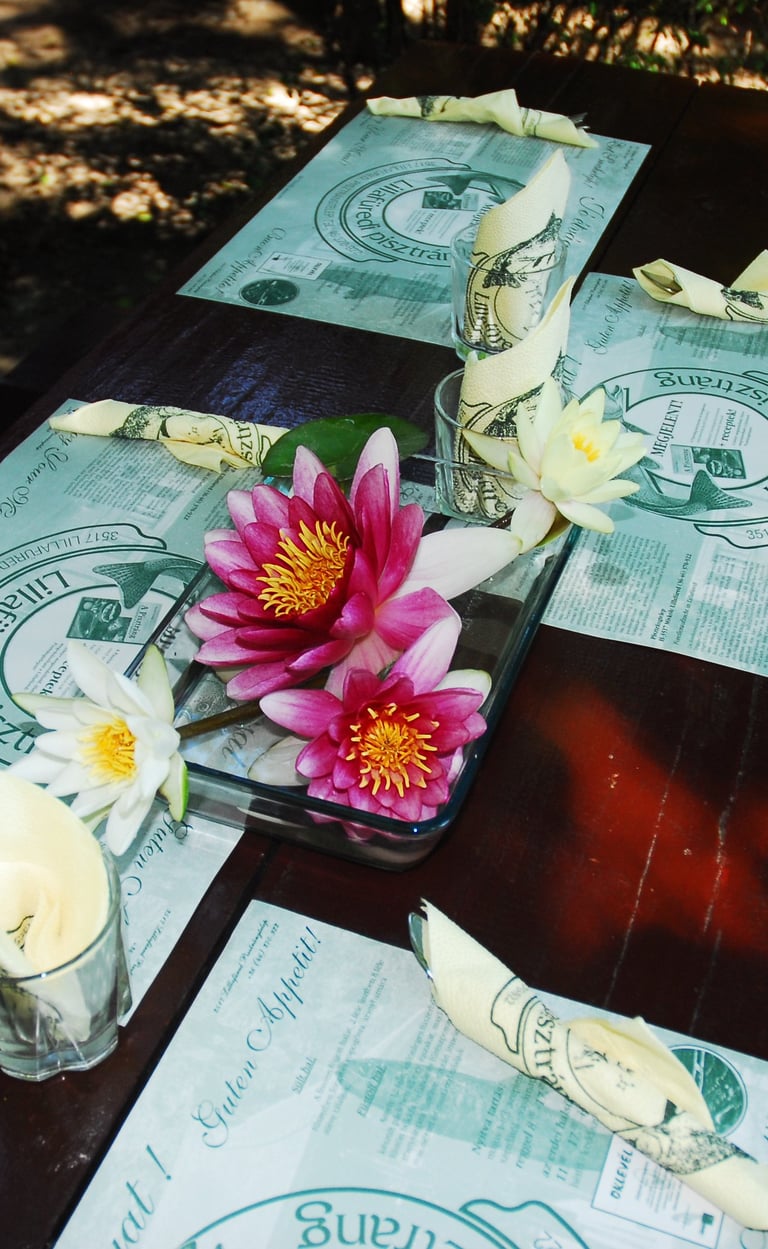

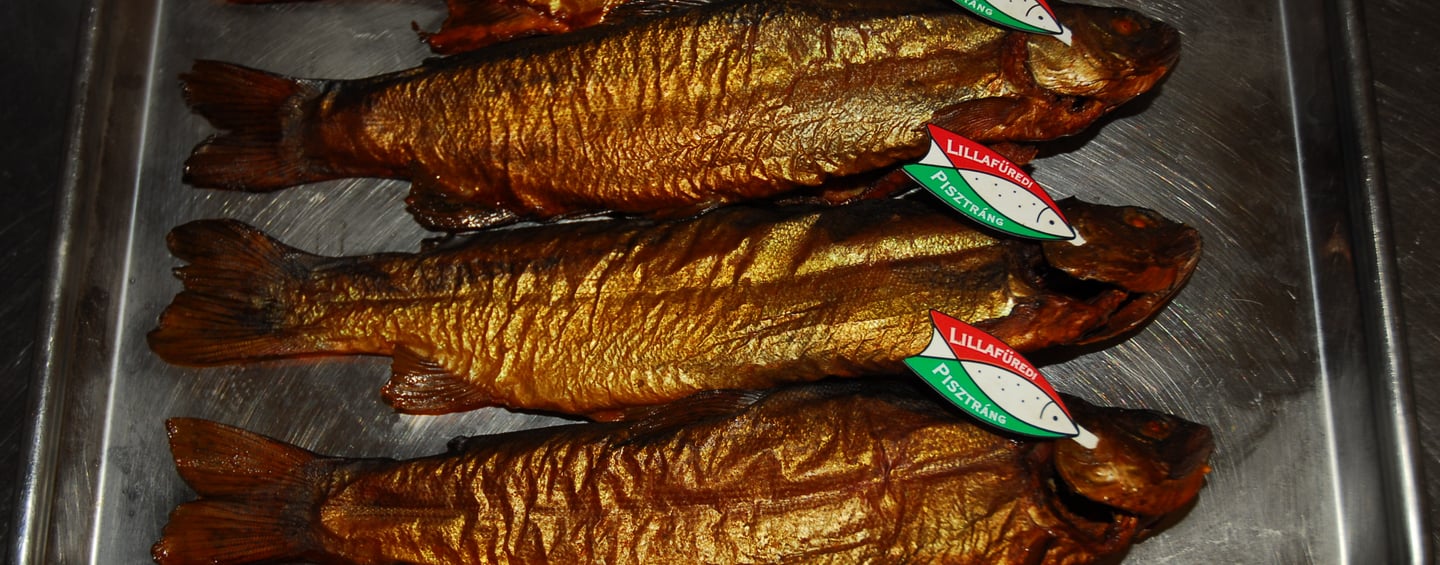

In 1934, two more ponds were built, and in 1939, four more ponds were built, supplied by the Garadna stream. In 1940-41, a new hatchery was built to replace the old one, which was badly worn. When the Garadna valley became a theatre of war, the entire fish stock was destroyed on 12 December 1944. Production from the streams resumed with a reduced number of trout. István Vásárhelyi was retired in 1958, but as production declined rapidly thereafter, he was reinstated as a technical adviser. He worked at the plant until his death in 1968, while conducting invaluable research on fish, snails, insects and small mammals, and publishing more than 500 articles in national and foreign journals.
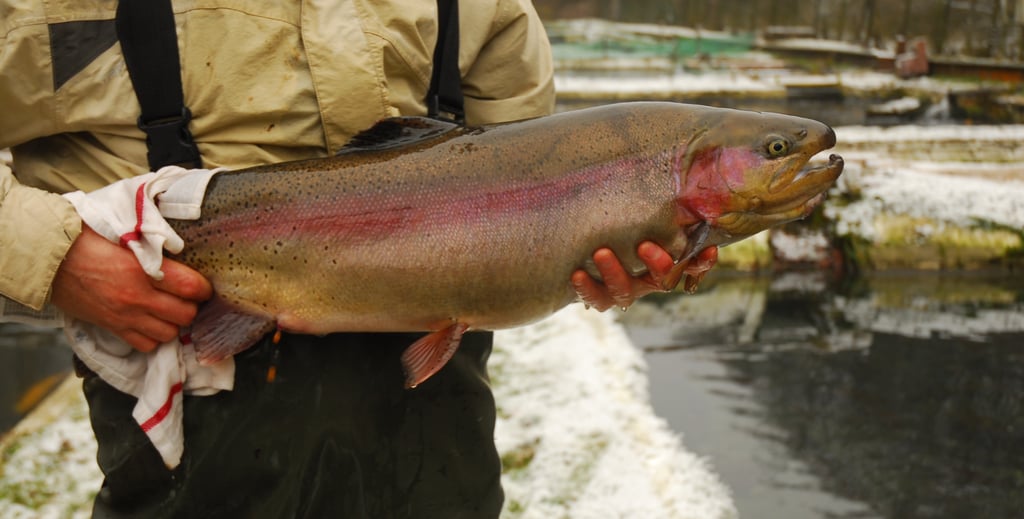

The condition of the plant, and with it production, deteriorated rapidly from 1968 onwards. In 1980-1982, it was able to produce 120 000 eggs and 1-1.2 tonnes of table trout per year. In 1983, for the first time since István Vásárhelyi, the farm was again managed by a fish farmer. Today, production reaches 30-36 t, depending on water availability, and 0.5-1 million eggs are hatched annually.
